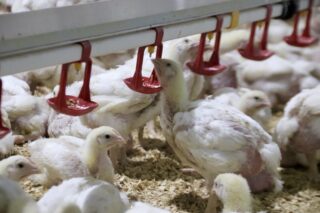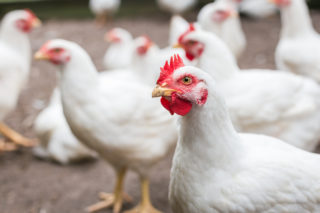Controlling Salmonella,
beyond biosecurity
A frequent cause of zoonoses worldwide, poultry meat and egg consumption are one of the main reasons for Salmonellosis in humans and cause thousands of deaths annually. Commonly present in the environment and able to survive under harsh conditions, Salmonella is difficult to eradicate. To control the risk of Salmonella contamination, the first step is monitoring and identifying its presence in the environment. Once identified, most producers apply a strategy focusing on minimizing the specific risks. However, enabling the birds to kill Salmonella bacteria and become more resistant to salmonella contamination can further reduce the threat.

Beyond biosecurity
Biosecurity is the main approach to controlling salmonellosis and any other disease in poultry production. Still, Salmonella is an issue in many companies and countries. Therefore, some countries are vaccinating against certain pathogenic strains. However, vaccinations do not cover all types of Salmonella and are also not 100%. So, an additional step is necessary, one with an additional emphasis on the animal. A product that specifically attacks Salmonella bacteria in the intestinal tract of the animal and at the same time strengthens the animal to be resistant to Salmonella colonization.
Begin in the gizzard
To achieve this, the product must work quickly when it reaches the gastrointestinal intestinal tract (GIT); limiting the bacteria’s time to multiply and colonize. The first portion of the GIT is a low-pH environment. Therefore, since Salmonella can survive for a short period in a low pH environment, a solution needs to have a strong antibacterial effect at a low pH. Medium-chain fatty acids C6 to C10 have strong antibacterial effects against Salmonella in an acidic environment like the gizzard.

Intestinal protection
Some bacteria will always survive, so an additional defense is needed to prevent the colonization of the intestine and the invasion of the systemic system. Unfortunately, some short-chain fatty acids and C10 and C12 aid in the invasion of Salmonella into epithelial cells. However, C6 to C9 counteract this invasiveness significantly and aid in the strategy to kill the bacteria, limit invasiveness, and reduce the risk of Salmonella contamination. Additionally, C6 to C9 are known to contribute to an improved vaccination immune response.
Managing risk
Although implementing biosecurity measures is crucial in decreasing Salmonella contamination, focusing on the animal can result in a significant leap forward in food safety. By utilizing molecules that have particular antibacterial activity against Salmonella bacteria, the bacteria’s ability to colonize is challenged, reducing the possibility of invasion, and concurrently enhancing the immune response to vaccinations while optimizing their synergistic effects. Achieving these objectives through an affordable product could revolutionize food safety.